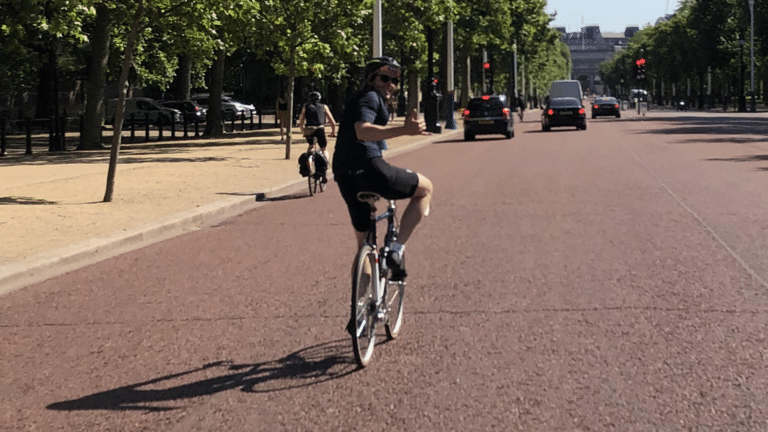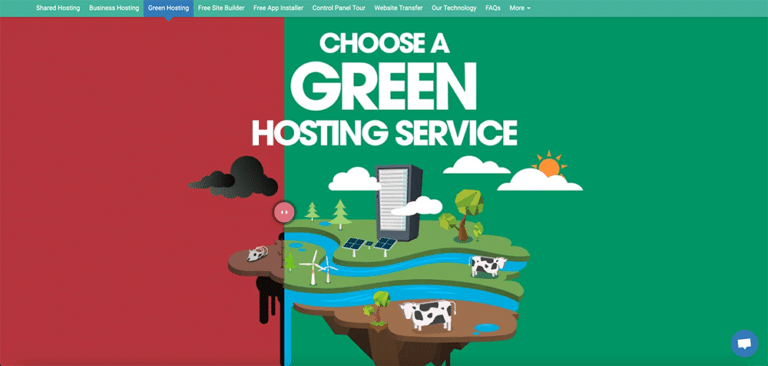HERO, as I am sure you know, is an app to help people make better daily and lifestyle decisions that help reduce their carbon footprint, but until we started on this journey I knew next to nothing about how my everyday habits, at home and at work, had an impact on the environment. I do now.
For context, I am a videographer by trade. I write, produce, film and edit. I’ve worked on television sets and created content for global brands but never really thought about how my work could have been improved to be more sustainable.
Now, however, my eyes have been opened and I see the light, and it’s an L.E.D. (a little lightbulb joke for you there).
At HERO, our key goals are to educate, inform and inspire with every piece of content that we produce, and if I may, I would like to share some helpful tips that I myself have recently learnt that could help you on your own path.
So for those content creators, TikTokers, silent scrollers, and film-lovers let me invite you on a journey… a metaphorical journey, because, #Covid.
The Impact of Content
Now I hate to break it to you, but pretty much everything we do leaves a footprint, not the kind that Bear Grylls tracks for his brunch, but a carbon footprint. Lights, Camera and Action all have a consequence.
A carbon footprint is often measured in tonnes of carbon dioxide (CO2), but before we start throwing out some stats let’s quickly wrap our heads around what a ton of CO2 looks like.
For comparison, 1 cubic foot of CO2 gas weighs a little over 50 grams. So with a little math and help from my eco friendly search engine Ecosia one tonne of carbon dioxide is approximately:
- 17,483 cubic feet
- Or, a family car driving for 5,000km.
- Or, the size of roughly 3.5 London double decker busses.
When I tell you that for every one hour of television that is made in a studio, roughly 20 tonnes of CO2 is released into the atmosphere (that’s 70 double decker buses) you can start to appreciate how big a carbon footprint content production leaves behind. Now I’m not telling you this because I want you to feel guilty the next time you Netflix & Chill, however, it is important for us to understand the by-products of our content obsession because by doing this, we allow ourselves to create solutions and implement them moving forward.
My mission here is not to preach. I am still on my own journey of discovery and I am learning new things about sustainability everyday, however I would like to mention just a few tips that could potentially help someone like you on their own sustainable adventure.
There are many incredible organisations that are making a positive impact on the film and television industry and one which every production company and freelancer should be aware of is Albert.
Albert is the authority on environmental sustainability for television and film and is leading the way in positive action against climate change within the industry. They offer incredible resources such as guides, advice, case studies, articles, free training as well as a carbon calculator so you can measure your own production’s carbon footprint.
HERO are registered with Albert and we are extremely excited to have begun our own journey to educate ourselves and implement positive action in everything that we produce.
For any content creators reading this, there are plenty of simple yet effective measures that we can take to help make our shoots more environmentally friendly. Whether you’re using the latest RED camera, a smart phone or a DSLR, why not try implementing a handful of these tips into your next production?
Stock Footage & Repurposing Content
Shoot days are a large contributor to the amount of CO2 waste that results from the industry for many factories. The travel involved going to and from sets for all crew and talent. The energy usage for studio hire, lights and equipment. Food catering, including the hidden CO2 footprint that food has during its life cycle to your plate alongside any food waste left at the end of the day, the list goes on.
One very effective way that all content creators can reduce their carbon footprint is to use stock footage or repurpose and reuse pre existing material instead of venturing out to film something new.
Now I appreciate you can’t always get what you need from stock footage as you will often need a specific shot or sequence filmed, but for those occasions where stock footage could do the trick, have a browse online before you book in any shoot days as you might just find what you need.
There are many subscription based platforms that offer incredible, high quality footage which more often than not can get the job done, but there are also platforms that offer free to use stock footage and have a large catalogue of high quality content. Websites such as Pixabay and Pexels offer a wide range of products which could be used for your film. Always check the licensing details before using any footage from a website to ensure you have the legal right to use it.
LED Lights
Traditional halogen, incandescent and fluorescent lighting are becoming less and less popular within the industry due to the multiple benefits that LED lights provide. For starters, traditional lights are notorious for the large amount of energy required to operate whereas LED lights use roughly 50% less energy to run. As they are more efficient they are also much cheaper to operate as they require less energy from the grid.
90% of the energy used for traditional lights is actually wasted as heat, some of these lamps get so hot during use that you could actually fry an egg on them, or whatever vegan alternative product to make that more relevant.
Furthermore, LED lights have a substantially longer life span that traditional lights and can last between 30,000-50,000 hours. I could continue to list a bunch of other benefits but just ditch the old school and pick up an LED.
Rechargeable Batteries
There are many items of equipment that come with rechargeable batteries as standard, think of your typical cameras and portable light panels. However there are many items that require normal batteries to operate such as microphones, small lights, audio recording equipment and more. These items more often than not use throwaway batteries such as AA and AAA and in the UK alone, we throw away roughly 600 million batteries a year! That’s a lot of batteries.
Of the 40,000 tonnes of batteries that were sold last year, only 18,000 tonnes were recycled. Most batteries end up in bins and landfill sites where they can begin to rot away and leak harmful chemicals into the soil.
Rechargeable batteries are far better for the environment due to the greater life span that they have. A good batch of rechargeable batteries will last at least 200 charges before their capacity begins to decrease significantly. So not only are they better for the environment, but they’re also better for your wallet.
Reusable Bottle
Staying hydrated whilst on a shoot is essential. The days can be very long and demanding and it is vital that you can maintain your focus. Staying hydrated enhances your productivity both mentally and physically. It can offset any potential safety risks as dehydration can cause a reduction in concentration which could be a risk to yourself or anyone else on set. There are often an abundance of plastic water bottles available on location whilst filming but one super simple yet effective solution for you to embrace is taking your own reusable bottle.
Other notable tips include:
- Whilst on set provide or choose vegetarian and/or vegan catering options. Meat is one of the largest contributors to climate change so any meat free days are good days.
- Use local catering companies and staff to reduce emissions from travel. Not only is it better for the environment but it also helps the community.
- Use reusable and biodegradable cutlery. If they don’t have any available, why not take your own with you each day?
- Encourage the use of digital work and phase out printing for non essential items. Save the trees man.
- Shred any wasted paper and put it in the compost.
- Where possible, use recycled and pre-built sets and recycle your own once production has finished.
- Use low emission transportation for all crew and talent.
The above are just a few tips that content creators, production companies and other creatives can implement into their daily lives to help reduce their carbon footprint.
So before you next hear “lights, camera, action!”, have a think and see if there are ways you can keep that conscious of yours squeaky clean.



